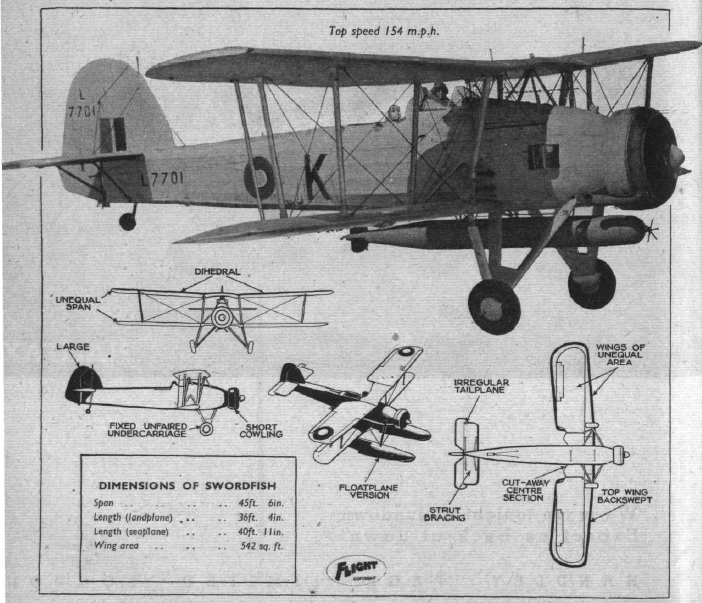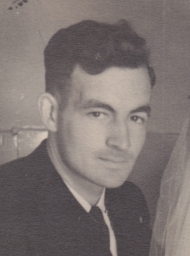Fairey Swordfish, Co. Sligo, September 1944
One story that is remembered well in the area around Easkey and
Aughris in County Sligo is that of the forced landing of a
Fairey Swordfish in the townland of Carrowcaslan at about 2100
hours on the 4th of September 1944. A summary report filed
on the 5th of September by the Irish Army G2 Branch
stated: A British aircraft
observed by L.O.P. Downpatrick head, at 19.08 hours, 4th
September, 1944, 2 miles north moving east, circled, and was
observed by L.O.P. Kilcummin Head and Garda Bangor Erris
over land moving west. It again turned and was later
observed by L.O.P.s Annagh Head to Aughris Head moving east
to Carrowcaslan, 2 miles south-east of Aughris Head, Co.
Sligo where it force landed at approximately 21.00 hours.
The aircraft, with a crew of two men, recorded by the Irish Army simply as Sub/Lt's Arcus and Pender, had destroyed half an acre of cabbage then slammed into Mr Foleys hen house killing 30 chickens. They reported they had flown from from Ballykelly in Northern Ireland but lost their bearings. The pilot had wanted to burn the aircraft but Power allowed him to call British legation in Dublin to clarify that the plane did not have to be destroyed if landed in Eire. 17th battalion from Finner guarded aircraft and Flight Officer Herbert S Moore of the Royal Air Force from Northern Ireland and Capt P. OíSullivan from the Air Corps in Baldonnel arrived to salvage the aircraft which was fitted with new radar device. Arcus and Pender were handed over the border at 0420 at Belleek the morning after the landing.
The Irish Army G2 report on this plane crash, included the fact
Mr Foley was at his sonís funeral was to appear in the Irish
Times the following day but was censored and never printed.
The henhouse was valued at £5 and the chickens at 7 shillings 6
pence each. RAF Northern Ireland vehicles are allowed over the
border at Beleek in Donegal on the 7th of September, and
assisted in the dismantling of the damaged aircraft. The
aircraft under carriage and wings had been damaged and the
propeller bent during the landing. The aircraft was
dismantled and moved to Finner Camp, Co. Donegal on September
8th before it was handed over border to the RAF Northern Ireland
at Strabane on 10 September 1944. It was noted by the Irish Army
officers that the plane carried the serial number NR890 and the
letter C on the fuselage.
NR890 identifies the aircraft as a Swordfish Mark III built by
Blackburn at Sherburn. Delivered in May 1944, it was
assigned to 811 Squadron, of the Royal Navy, Fleet Air
Arm. More can be read about the Swordfish on the website
of the Navy
Wings website, the Royal Navy Historic Flight (RNHF) and
the Fly Navy Heritage Trust (FNHT). There is of course a Wikipedia
page about the aircraft. The British aviation publication,
Flight published the general arrangement drawings shown below
during 1943.

811 Squadron had just completed a series of duties on board the
escort carrier HMS Biter and had flown off in August 1944 and
were temporarily based at the RAF Coastal Command station at
Limavady, Co. Derry. The crew of course stated they had
flown from Ballykelly, not far from Limavady.
The Fairey Swordfish was a torpedo bomber biplane that began
life in the 1930s, but remained in front-line service until the
end of the war, primarily as an anti-submarine aircraft.
Sub Lieutenants Arcus and Pender were identified by review of
the Royal Navy Lists for the period.
 The pilot of the aircraft was a member of
the Royal New Zealand Naval Volunteer Reserve (RNZNVR), Sub/Lt
Alan Dougal ARCUS. Alan was born in 1921 to Jessie
and Thomas Arcus. He studied accountancy in the University
of New Zealand before the war and received his awards in
1940. New Zealand newspapers in early July 1942 published
military promotion information and this source reveals he
received a temporary commission in the Fleet air arm as a
Sub-Lieutenant (A) at that time. His name was mentioned
later in July 1942 as having arrived recently in England after
training in Canada.
The pilot of the aircraft was a member of
the Royal New Zealand Naval Volunteer Reserve (RNZNVR), Sub/Lt
Alan Dougal ARCUS. Alan was born in 1921 to Jessie
and Thomas Arcus. He studied accountancy in the University
of New Zealand before the war and received his awards in
1940. New Zealand newspapers in early July 1942 published
military promotion information and this source reveals he
received a temporary commission in the Fleet air arm as a
Sub-Lieutenant (A) at that time. His name was mentioned
later in July 1942 as having arrived recently in England after
training in Canada.
He was promoted to Lieutenant (A) in late 1944.
Some of the postings found for him in the Royal Navy Lists
include:
Oct 42 - no unit mentions
Dec 1942 - posted with Ferry Pool
Apr 1943 -HMS Sparrowhawk
Between Feb 1943 - Oct 1944 - 811 Sqn
Jan 1945 - No mention of unit
Jul/Oct1946 HMS Cook
He passed away in New Zealand in 1993.
 Denis Hugh
Pender was born, 11th Dec 1924, in Butte Montana to Hilda
and George D Pender. They and Denis returned to England in
1926 and settled in St Ives, Cornwall.
Denis Hugh
Pender was born, 11th Dec 1924, in Butte Montana to Hilda
and George D Pender. They and Denis returned to England in
1926 and settled in St Ives, Cornwall.
His service saw him posted around the Fleet Air Arm, including
service with 766 Squadron in early 1944, then to 810 Squadron
where had had the mishap described above, and 819 Squadron in
January 1945. This latter unit was active in attacks on occupied
Holland and Belgium ports in early 1945. Late 1945 finds
him back at a training unit, 798 Squadron. Denis married
around that time in Surrey, to Florence June Sutton.
The family moved to Canada in 1958 and continued his career
working in banking, the photo shown here was published in 1969
in a BC newspaper. Denis passed away in Mission, British
Columbia in December 2004.
Additional information added to digital version by Dennis Burke, 2012 - 2024.
